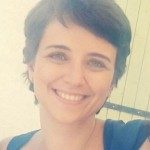Link to Pubmed [PMID] – 31657966
Link to DOI – 10.1146/annurev-pathmechdis-012419-032742
Annu Rev Pathol 2020 01; 15(): 439-466
Legionella species are environmental gram-negative bacteria able to cause a severe form of pneumonia in humans known as Legionnaires’ disease. Since the identification of Legionella pneumophila in 1977, four decades of research on Legionella biology and Legionnaires’ disease have brought important insights into the biology of the bacteria and the molecular mechanisms that these intracellular pathogens use to cause disease in humans. Nowadays, Legionella species constitute a remarkable model of bacterial adaptation, with a genus genome shaped by their close coevolution with amoebae and an ability to exploit many hosts and signaling pathways through the secretion of a myriad of effector proteins, many of which have a eukaryotic origin. This review aims to discuss current knowledge of Legionella infection mechanisms and future research directions to be taken that might answer the many remaining open questions. This research will without a doubt be a terrific scientific journey worth taking.






